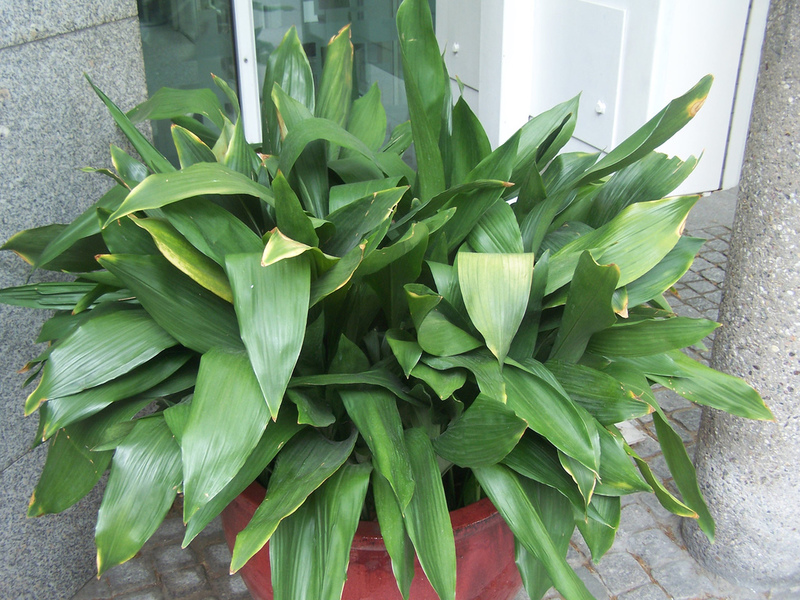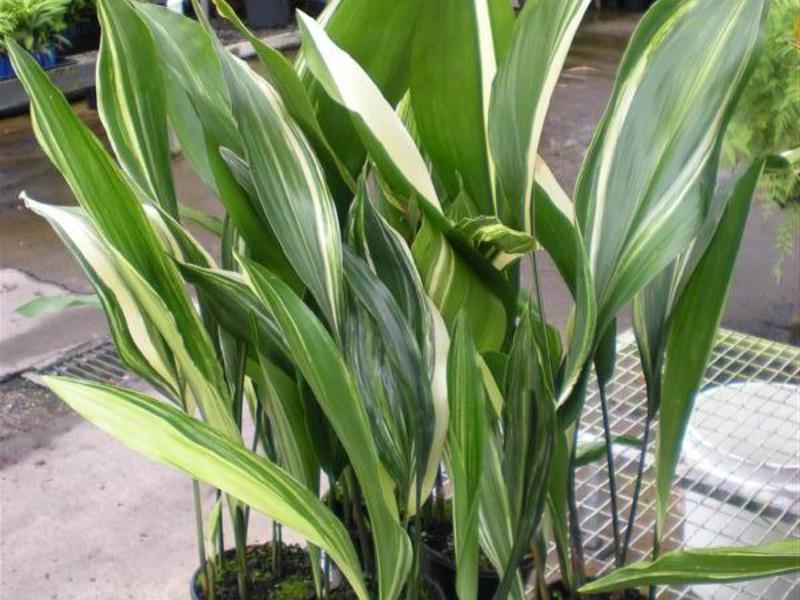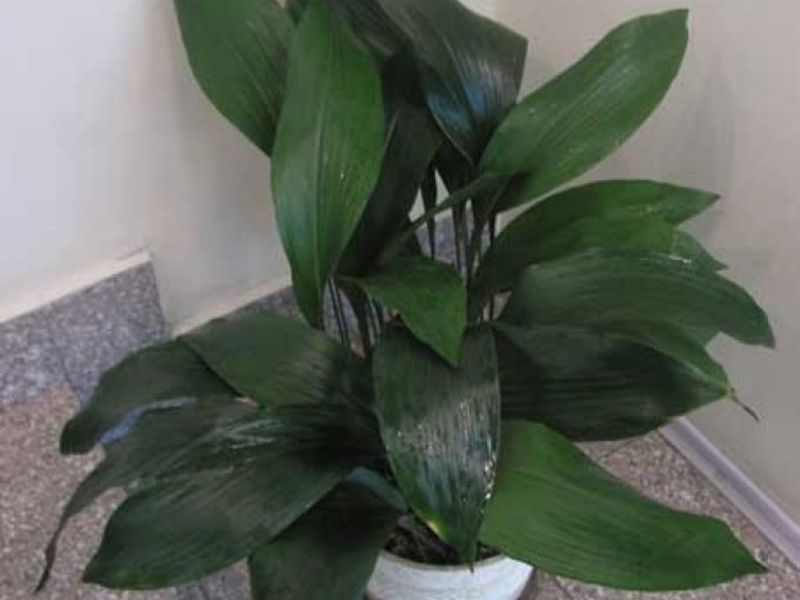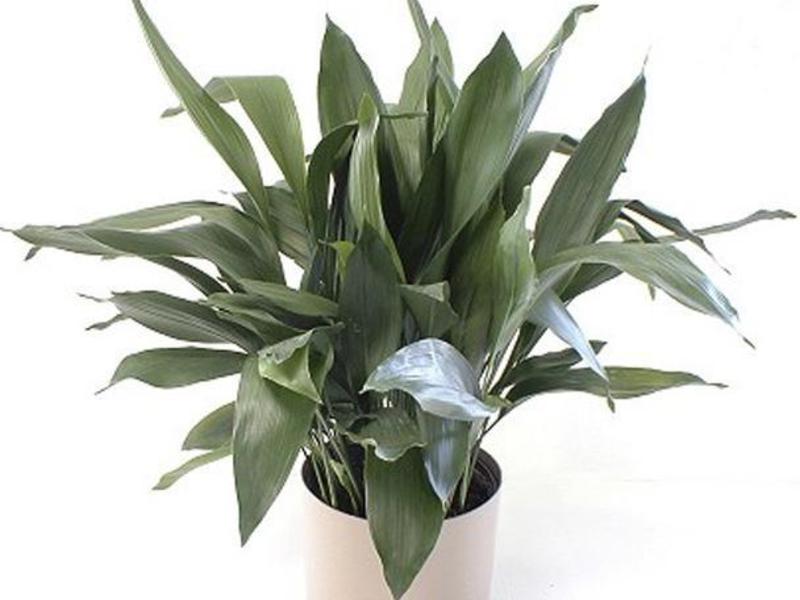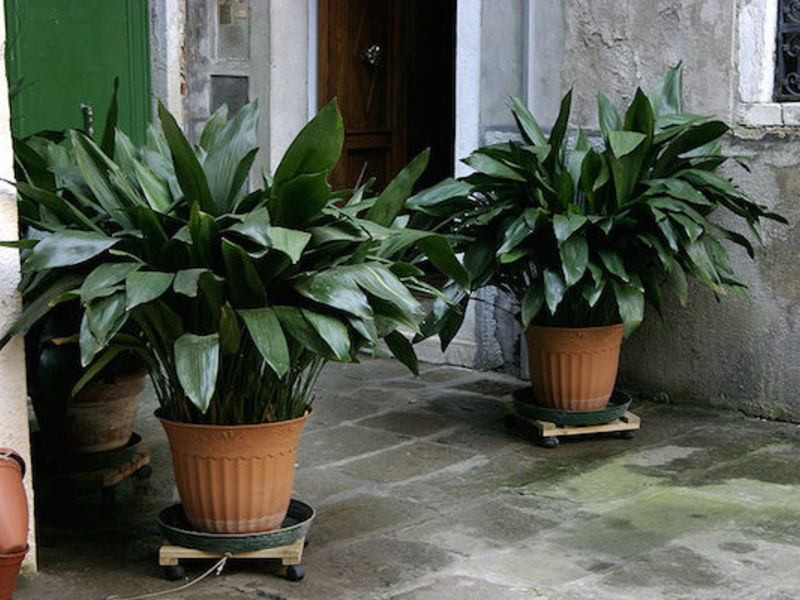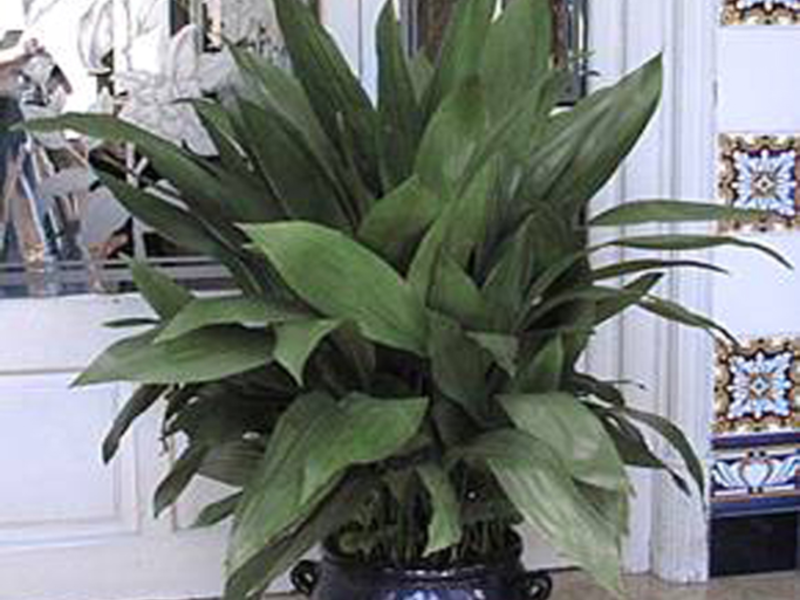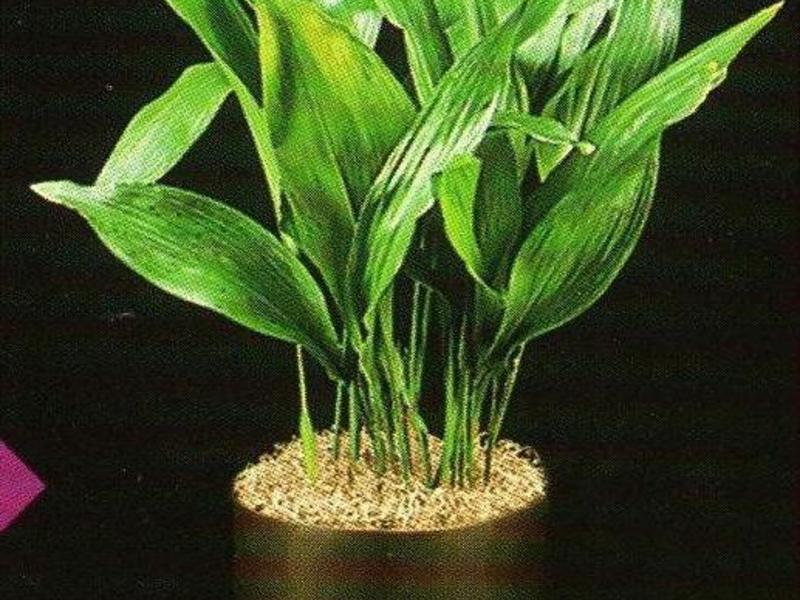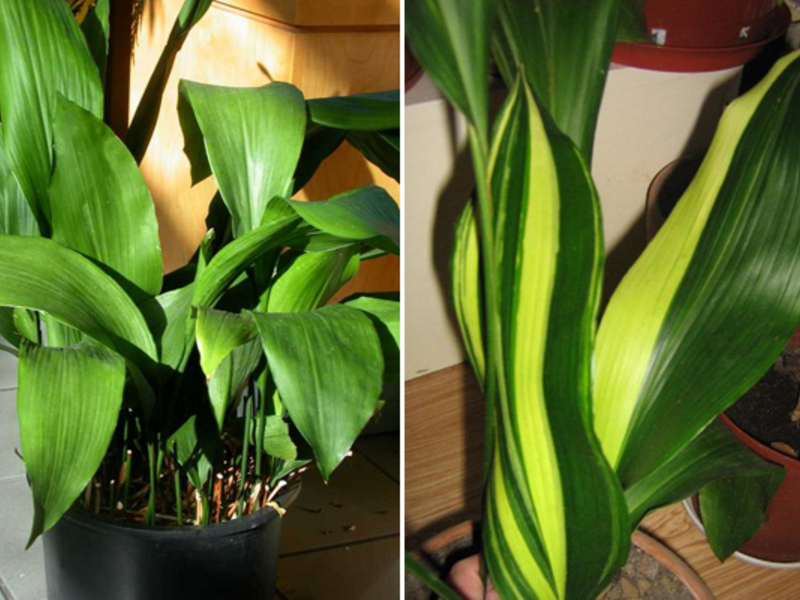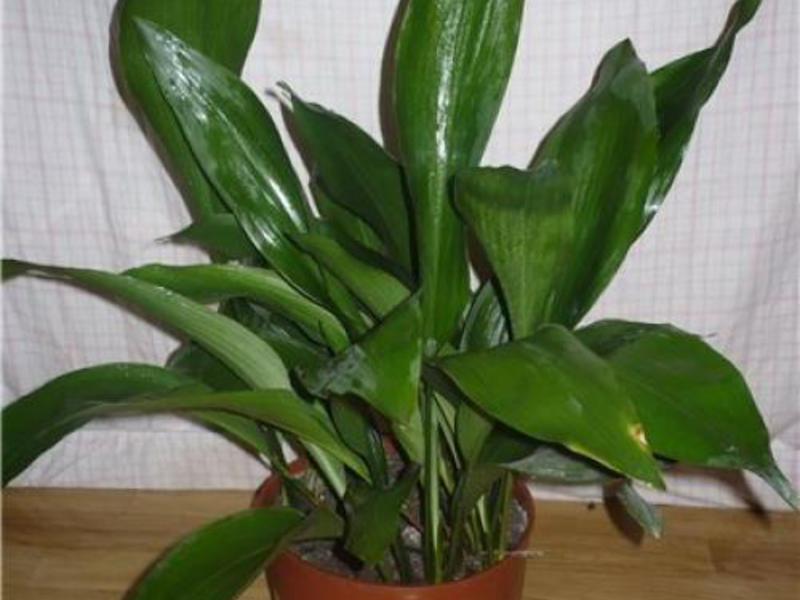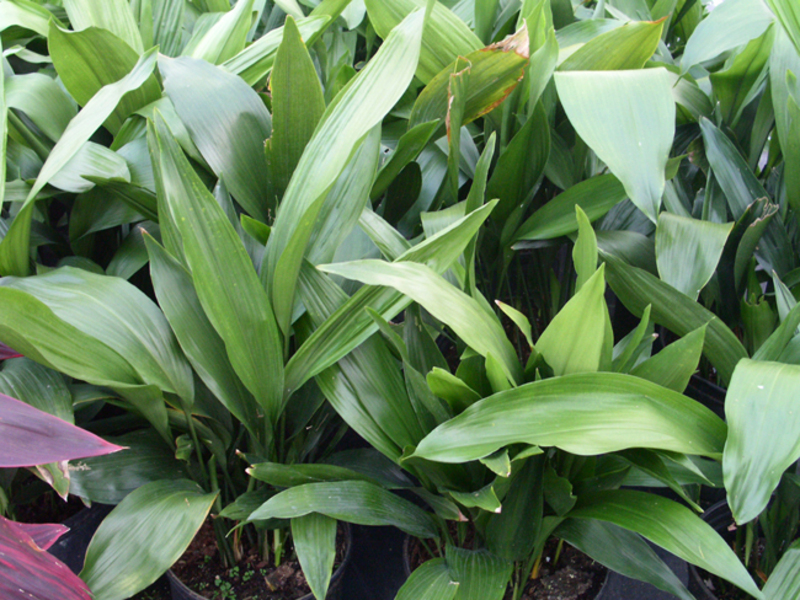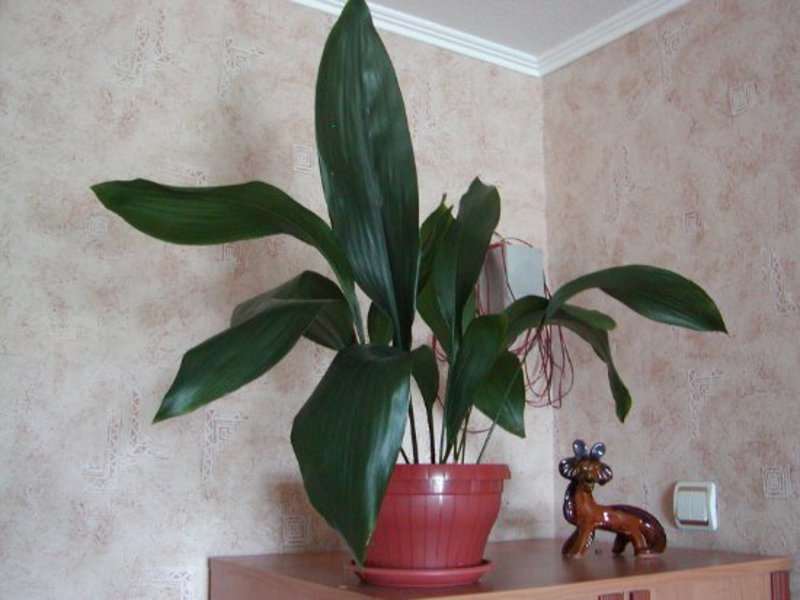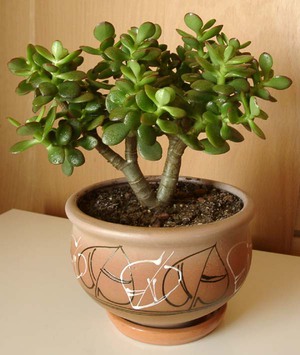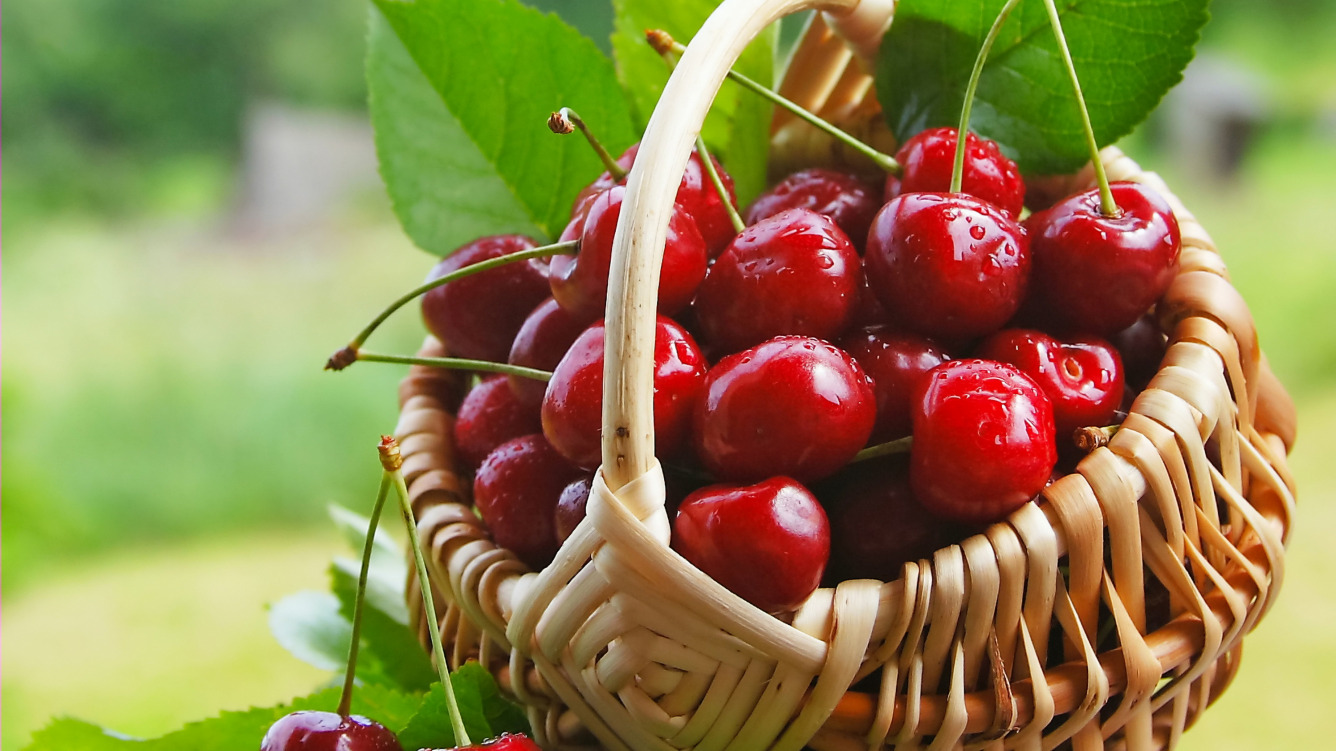Aspidistra is one of the most unpretentious indoor plants, as it naturally lives in shaded and cool forests. The subtropics and tropics of East Asia are considered the homeland of the herbaceous ornamental-deciduous plant. It was there that the aspidistra was given the second name "Index of snakes". This is due to the fact that when a snake crawls between its leaves, they sway, as if indicating danger. At home, the plant can be grown in almost any corner of the room, while observing some of the rules for caring for aspidistra.
Content
Description, types and photos of aspidistra
The plant is distinguished by profusely branched rhizomes, absence of a stem, basal leathery leaves and nondescript small flowers. Scale-like leaves may be dark green in color and have various spots. Since the growth point of the aspidistra is located in the depth of the funnel, the task of the scales is to protect the leaf, which breaks through the soil outward. It is very rare to see the flowering of aspidistra, the flowers of which are formed in the rhizomes. It can bloom in the summer and only for one day. If you transfer pollen from one plant to another, then you can get large fruits, inside which there will be only one seed.
The main types of aspidistra
The species of aspidistra that differ in size and color of sheets, a large number of. For indoor floriculture, the following can be distinguished among them:
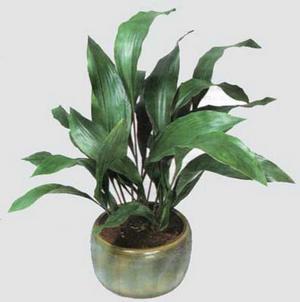 Aspidistra tall or Elatior is a herbaceous perennial with a creeping rhizome. Lily-of-the-valley-like leaves are dark green, wide, glossy leaves up to 15 cm long. They have a lanceolate or oval shape and grow from the rhizome itself. The bell-shaped yellow-brown or crimson-brown perianth consists of eight lobes.
Aspidistra tall or Elatior is a herbaceous perennial with a creeping rhizome. Lily-of-the-valley-like leaves are dark green, wide, glossy leaves up to 15 cm long. They have a lanceolate or oval shape and grow from the rhizome itself. The bell-shaped yellow-brown or crimson-brown perianth consists of eight lobes.- The large-flowered aspidistra became very popular quickly, although it was recently discovered in one of the regions of Vietnam. The reason for this was its obovate leaves, growing up to 80 cm and having contrasting spots on the plate. In addition, the plant has amazing flowering. Around the middle of summer, 2-3 flower buds form on the roots, from which purple corollas grow. A truly unique bloom of this species is made by elongated petals with dark purple edges.
- Aspidistra Attenuata is a plant with a round, creeping rhizome, which grows into dense clumps. Dark leaves with small light spots grow up to half a meter in length and reach 8 cm in width.
- Aspidistra Guanjou is distinguished by single elliptical or ovoid leaves and very thin rhizomes. Not very large leaves are kept on a long petiole. Quite often, chaotically scattered yellowish spots can be seen on them.
- Aspidistra oblantsefolia is a native of China.It has rather narrow obverse-lanceolate leaves and small flowers. The foliage can be green or yellow-green.
- Sichuan aspidistra grows naturally in the bamboo forests of China. It is distinguished by single leaves 70 cm long and powerful creeping rhizomes. A dense green or spotted leaf blade grows up to 35 cm, and the stalk can be 10 to 40 cm long. Flowering occurs in the last winter months. The flowers look in the form of bells with six petals, a large columnar pistil and 6-8 stamens.
Features of caring for aspidistra at home
You can place the plant in almost any corner of the living room, and even in the bathroom and corridor. Since aspidistra afraid of direct sunlight and loves shade, a poorly lit room is suitable for her. Plants with variegated leaves are more demanding on lighting. But they will grow well on northern windowsills and under fluorescent lamps.
Temperature and humidity
 Aspidistra does not require a special temperature regime, so room conditions are suitable for it. In summer, the optimal temperature is considered to be within + 20C- + 22C, and in winter it is recommended to keep the plant in a cool room with a temperature of + 16C.
Aspidistra does not require a special temperature regime, so room conditions are suitable for it. In summer, the optimal temperature is considered to be within + 20C- + 22C, and in winter it is recommended to keep the plant in a cool room with a temperature of + 16C.
Aspidistra is good for ordinary room air. However, periodically her leaves are recommended wipe with a damp sponge or spray... This will have a beneficial effect on the growth of the flower.
Watering and feeding
Watering the plant in spring and summer is necessary immediately after the topsoil dries well. The water should be soft, settled and at room temperature. In winter, aspidistra is watered only a few days after the top layer of the earthen mixture has dried. If the flowers are kept in a cool room in winter, then watering is done about once every 10-15 days.
When caring for aspidistra, do not forget about feeding. For this, in spring and summer, special mineral and organic fertilizers are used for decorative leafy flowers. They need to be diluted twice as much as written in the instructions. It is not recommended to feed plants with variegated leaves, otherwise the leaves may just turn green.
Transfer
A plant purchased in a flower shop must adapt for several days in new conditions. At this time, he is carefully looked after. New green pet do not overdry and feed.
Clean from pests and diseases, the adapted plant is transplanted into a pot about 4-5 cm larger than the previous one. It should be deep and wide. The roots of the aspidistra grow quickly, and soon the new container will be completely filled with them. And often it is not recommended to transplant a plant with fragile roots. It is better to transplant by the transshipment method, in this case the flower will practically not hurt.
Aspidistra are unpretentious to the composition of the soil. For planting them, you can use a universal soil purchased at a flower shop. If possible, it is better to mix the earthen mixture yourself, taking for this in equal proportions:
- peat;
- humus;
- sod land;
- sand.
To give the soil a little acidity, you can still add leaf land.
At the bottom of the pot, drainage must be poured first, and then a small layer of new soil. Having freed from the old container, the aspidistra is carefully placed in a new pot, the roots are covered with soil and watered well. At the first time after transplanting, caring for the plant consists in timely watering and wiping the leaves.
Difficulties in growing aspidistra
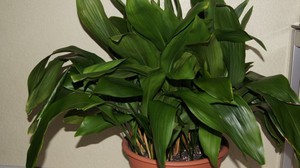 On the leaves of a plant in direct sunlight dark spots may appear - burns... In this case, the flower pot is rearranged away from the window.
On the leaves of a plant in direct sunlight dark spots may appear - burns... In this case, the flower pot is rearranged away from the window.
If the aspidistra is waterlogged for a long time, then its roots may begin to rot and the leaves turn yellow.In this case, watering is reduced, the soil is treated with a pink solution of potassium permanganate, and the bush is sprayed with fungicides.
Quite often, especially in dry indoor air, the plant is affected by a spider mite or scale insect. If pests are found on the leaves, it is necessary to wash the plant and urgently treat it with special preparations. You can use "Fufanon" or "Karbofos". Further, daily spraying of the leaves and humidification of the indoor air is recommended. In case of severe infection, treatment with Aktelik is required.
Reproduction of aspidistra at home
There are three ways to propagate a plant:
- By dividing the bush.
- Rooting the leaf.
- Seeds.
Dividing the bush
it the easiest and fastest way to reproduce, which can be used only if more than 8 leaves have grown on the aspidistra. When transplanting an adult plant, a part is separated on which there should be at least four leaves.
A transparent cap is put on the planted young plant, and the pot is placed in a warm place. While caring for it, daily ventilation of the bush and moistening of the soil as needed are required. As soon as the aspidistra takes root and releases its new leaf, the cap can be removed.
Leaf propagation
 A full-fledged plant with this method of reproduction can be obtained over a longer period. In this case, all its varietal characteristics will be transferred.
A full-fledged plant with this method of reproduction can be obtained over a longer period. In this case, all its varietal characteristics will be transferred.
For rooting, a leaf with a thick fleshy influx is selected and cut off without a petiole. It will need to be rooted in a hermetically sealed container. To do this, you can take a kefir bottle with a wide neck.
It is lowered into a container filled with water cut-dried leaf, and the container is tightly closed. The roots should germinate in a well-lit and warm place.
As soon as the roots appear and grow a little, the leaf can be planted in a pot of soft, leafy soil. Until a new leaf appears, the leaf with the roots is covered with a transparent cap. If the leaf has not given roots and has rotted, it must be pulled out, trimmed, dried and put back into fresh water.
Seed propagation
This method of reproduction is very long, but it makes it possible to obtain new varieties of aspidistra. The seeds can be bought at the store or obtained after pollination of a flower from a neighbor. Flowering lasts only 24 hours, so you shouldn't miss it.
Seeds are sown in spring containers filled with warm and moist soil... It is not recommended to bury the seeds deeply. They can be sown one at a time or several, but then sown. With this reproduction, the plant will develop slowly. Therefore, aspidistru seeds are propagated mainly by experienced flower growers, lovers of obtaining new varieties.
Observing all the rules of care, you can grow a large plant, propagate it and give it to your friends. Everyone will like such a gift, since aspidistra is unpretentious, purifies the air and has medicinal properties.
